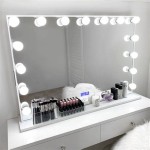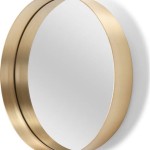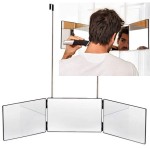Sony Bravia Screen Mirroring Laptop Registration Failed
Screen mirroring allows users to display the content of their laptop, smartphone, or tablet directly onto a larger screen, such as a television. This functionality is particularly useful for presentations, sharing photos and videos, or enjoying mobile games on a bigger display. Sony Bravia televisions offer screen mirroring capabilities, however, users occasionally encounter the frustrating "Laptop Registration Failed" error message. This article explores the potential causes of this issue and provides troubleshooting steps to resolve it.
Network Compatibility and Configuration
One of the most common reasons for screen mirroring registration failures lies in network inconsistencies. Both the laptop and the Bravia television must be connected to the same Wi-Fi network for screen mirroring to function. Simply being connected to the internet is insufficient; they must reside on the identical local network. Users should verify this by checking the network name (SSID) on both devices. Furthermore, certain router configurations, such as AP isolation or MAC address filtering, can prevent devices from communicating within the network, thereby disrupting screen mirroring. Temporarily disabling these features during troubleshooting can help isolate the issue.
Beyond network connectivity, the type of Wi-Fi network can also play a role. Older or less common Wi-Fi standards might not be fully compatible with the screen mirroring protocols used by the Bravia television. Ideally, both devices should be connected to a network utilizing 802.11n or a more recent standard like 802.11ac or 802.11ax. Checking the router's configuration and potentially updating its firmware can sometimes resolve compatibility problems.
Device Software and Firmware
Outdated or corrupted software on either the laptop or the television can also contribute to registration failures. Ensuring both devices are running the latest software versions is crucial. For the Bravia television, this involves checking for firmware updates through the television's settings menu. Laptop operating systems and wireless adapter drivers should also be updated to their most recent versions. Outdated drivers, in particular, can lead to communication issues between the devices.
In some instances, a simple restart of both the laptop and the television can resolve the problem. This process clears temporary system files and resets network connections, which can sometimes rectify minor software glitches that interfere with screen mirroring registration.
Firewall and Antivirus Interference
Firewalls and antivirus software are designed to protect devices from unauthorized access and malicious software, but they can sometimes inadvertently block legitimate network communication. They might misidentify screen mirroring traffic as a potential threat, preventing the laptop from registering with the television. Temporarily disabling the firewall or adding an exception for screen mirroring in the firewall settings can help diagnose this issue. Similarly, certain antivirus programs can interfere with network discovery. Temporarily disabling the antivirus or configuring it to allow communication between the laptop and the television on the local network might resolve the registration problem.
It's important to remember to re-enable firewall and antivirus protection after troubleshooting is complete, unless the issue is definitively identified as stemming from these security measures.
Hardware Limitations and Compatibility
While less frequent, hardware limitations can also prevent successful screen mirroring registration. Older laptops with outdated wireless network adapters may lack support for the necessary protocols or bandwidth required for smooth screen mirroring. Similarly, older Bravia models might not be compatible with newer screen mirroring technologies used by recent laptops. Consulting the specifications of both devices can confirm compatibility.
In cases where hardware limitations are suspected, using alternative methods of screen mirroring, such as connecting the laptop to the television via an HDMI cable, might be a more reliable solution. While less convenient than wireless mirroring, a wired connection bypasses many of the potential software and network-related issues.
Interference from Other Devices
Wireless interference from other devices operating on the same frequency band can also disrupt screen mirroring. Devices such as microwave ovens, cordless phones, and Bluetooth devices can sometimes interfere with the 2.4 GHz Wi-Fi signal commonly used for screen mirroring. If possible, minimizing the use of these devices during screen mirroring or switching to the 5 GHz Wi-Fi band, if supported by both the laptop and television, can improve the connection stability and registration success rate.
Physically moving the laptop closer to the television and router can also help mitigate signal attenuation and interference, particularly in environments with numerous wireless devices or physical obstructions.

Screen Mirror Phone To Tv Registration Fail Problem Fixed Redmi Mi Samsung Asus Nokia Realme

Screen Mirroring In Sony Bravia Tv 32 Inch Solved

How To Connect A Sony Tv Laptop

Sony Bravia Screen Mirroring Follow If You Can T Mirror Your Phone Activate Subtitle For More Inf

Sony Bravia Screen Mirroring Follow If You Can T Mirror Your Phone Activate Subtitle For More Inf

Screen Mirroring Oneplus To Sony Bravia Tv A Complete Guide Registration Failed Error Solution

2024 Screen Mirroring Sony Tv With Android Iphone Laptop

Sony Bravia Screen Mirroring Follow If You Can T Mirror Your Phone Activate Subtitle For More Inf

Tv Sideview Troubleshooting

Sony Bravia Screen Mirroring Follow If You Can T Mirror Your Phone Activate Subtitle For More Inf








